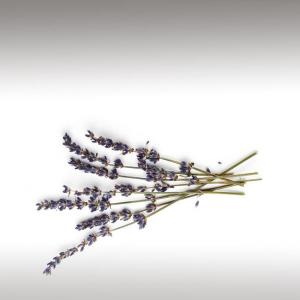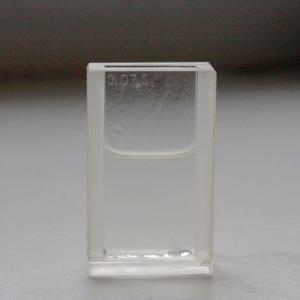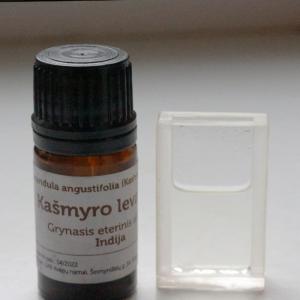
LAVENDER ESSENTIAL OIL (LAVANDULA ANGUSTIFOLIA) - ESSENTIAL OILS

BASE / GENERAL DATA
Information submited: April 22, 2015 Modified: March 13, 2018 By: OperaDreamhouse
Botanical Name: Lavandula angustifolia
Common Method of Extraction: Steam Distilled
Part Typically Used: Flowers
Color: Clear
Consistency: Thin
Perfumery Note: Middle / Top
Strength of Initial Aroma: Very fine green floral, sweet herbaceous, penetrating, clear and fresh.
The species name Angustifolia is Latin for "Narrow leaf".
Lavandula Angustifolia (Lavender or English Lavender also common Lavender, True Lavender, Narrow - Leaved Lavender), formerly Lavandula Officinalis, is a flowering plant in the family Lamiaceae, native to the western Mediterranean, primarily the Pyrenees and other mountains in northern Spain.
The name is derived from the Latin word "Lavera" which means "To wash" and the Romans used it frequently in their bath routine, and it is said to have been introduced by them into England, where it soon was a firm favorite.
It was a favorite for screwing on the floor, since it released an aroma when walked upon and it is often used these days in toilet water, as an insecticide or in sachets to be placed between linen.
It is a strongly aromatic shrub growing as high as 1 to 2 metres tall. The leaves are evergreen, 2 - 6 centimetres long, and 4 - 6 millimetres broad. The flowers are pinkish - purple (Lavender - coloured), produced on spikes 2 - 8 cm long at the top of slender, leafless stems 10 - 30 cm long.
It is popular for its colourful flowers, its fragrance and its ability to survive with low water consumption. It does not grow well in continuously damp soil. It is fairly tolerant of low temperatures.
Lavandula Angustifolia is the True Lavender. It is produced throughout the world, although France is considered the premier growing region. In the world of essential oils, Lavender is one of the most commonly used due to its versatility and pleasant scent.
Lavender oil is extracted from the flowering tops by steam distillation and yields 1,4 % - 1,6 %.
True Lavender oil, which is obtained by steam distillation of the flowering tops of the plant, is non-toxic and has a full flowery aroma. The Bulgarian grown Lavender has a sweet smell. The aroma of Lavandin is usually more camphoraceous. Tuscan Lavender has a refreshing topnote.
Common Method of Extraction: Steam Distilled
Part Typically Used: Flowers
Color: Clear
Consistency: Thin
Perfumery Note: Middle / Top
Strength of Initial Aroma: Very fine green floral, sweet herbaceous, penetrating, clear and fresh.
The species name Angustifolia is Latin for "Narrow leaf".
Lavandula Angustifolia (Lavender or English Lavender also common Lavender, True Lavender, Narrow - Leaved Lavender), formerly Lavandula Officinalis, is a flowering plant in the family Lamiaceae, native to the western Mediterranean, primarily the Pyrenees and other mountains in northern Spain.
The name is derived from the Latin word "Lavera" which means "To wash" and the Romans used it frequently in their bath routine, and it is said to have been introduced by them into England, where it soon was a firm favorite.
It was a favorite for screwing on the floor, since it released an aroma when walked upon and it is often used these days in toilet water, as an insecticide or in sachets to be placed between linen.
It is a strongly aromatic shrub growing as high as 1 to 2 metres tall. The leaves are evergreen, 2 - 6 centimetres long, and 4 - 6 millimetres broad. The flowers are pinkish - purple (Lavender - coloured), produced on spikes 2 - 8 cm long at the top of slender, leafless stems 10 - 30 cm long.
It is popular for its colourful flowers, its fragrance and its ability to survive with low water consumption. It does not grow well in continuously damp soil. It is fairly tolerant of low temperatures.
Lavandula Angustifolia is the True Lavender. It is produced throughout the world, although France is considered the premier growing region. In the world of essential oils, Lavender is one of the most commonly used due to its versatility and pleasant scent.
Lavender oil is extracted from the flowering tops by steam distillation and yields 1,4 % - 1,6 %.
True Lavender oil, which is obtained by steam distillation of the flowering tops of the plant, is non-toxic and has a full flowery aroma. The Bulgarian grown Lavender has a sweet smell. The aroma of Lavandin is usually more camphoraceous. Tuscan Lavender has a refreshing topnote.

SPIRITUAL PRACTISES DATA

MEDICINE / HEALTH DATA

BEAUTY / COSMETICS DATA

FOOD / COOKING DATA
COMMENTS
No comments.
Newest mixtures containing Lavender Essential Oil (Lavandula Angustifolia):

Softening hand balm
August 19, 2015

Foot fungus treatment recipe
April 22, 2015




